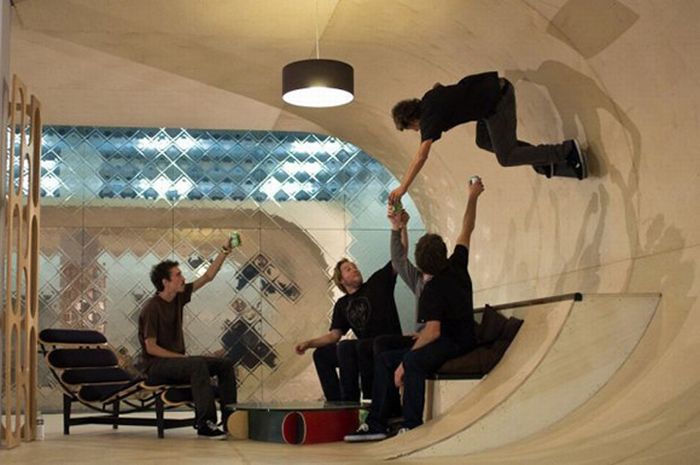|
|
Skateboarding Room
|
Manufacturers started to experiment with more exotic composites and metals, like fiberglass and aluminium, but the common skateboards were made of maple plywood. The skateboarders took advantage of the improved handling of their skateboards and started inventing new tricks. Skateboarders, most notably Ty Page, Bruce Logan, Bobby Piercy, Kevin Reed, and the Z-Boys (so-called because of their local Zephyr surf shop) started to skate the vertical walls of swimming pools that were left empty in the 1976 California drought. This started the vert trend in skateboarding. With increased control, vert skaters could skate faster and perform more dangerous tricks, such as slash grinds and frontside/backside airs. This caused liability concerns and increased insurance costs to skatepark owners, and the development (first by Norcon,then more successfully by Rector) of improved knee pads that had a hard sliding cap and strong strapping proved to be too-little-too-late. During this era, the "freestyle" movement in skateboarding began to splinter off and develop into a much more specialized discipline, characterized by the development of a wide assortment of flat-ground tricks.
As a result of the "vert" skating movement, skate parks had to contend with high-liability costs that led to many park closures. In response, vert skaters started making their own ramps, while freestyle skaters continued to evolve their flatland style. Thus by the beginning of the 1980s, skateboarding had once again declined in popularity.
• The 1980s
This period was fueled by skateboard companies that were run by skateboarders. The focus was initially on vert ramp skateboarding. The invention of the no-hands aerial (later known as the ollie) by Alan Gelfand in Florida in 1976 and the almost parallel development of the grabbed aerial by George Orton and Tony Alva in California made it possible for skaters to perform airs on vertical ramps. While this wave of skateboarding was sparked by commercialized vert ramp skating, a majority of people who skateboarded during this period never rode vert ramps. Because most people could not afford to build vert ramps or did not have access to nearby ramps, street skating gained popularity.
|
|









